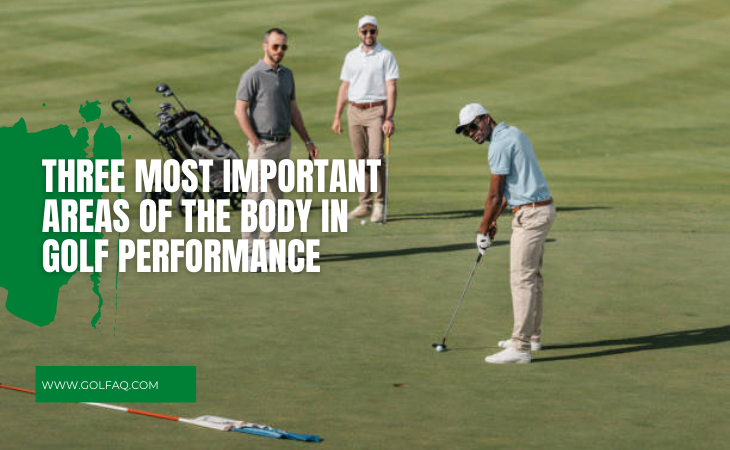The three most important areas of your body for golf are:
- The Hips / Glutes
- The Core / Pelvis
- The Scapula (shoulder blades) / Upper Back
We focus on these three parts of the body because they are key to your golf momentum - no surprises happen! The reason they are key to your dynamics is that these are the three areas that have the greatest impact on what the club does. If the three key areas work properly, then we have a better chance of achieving a repeatable and bio-mechanically effective impulse. You know, the kind of swing that repeats from time to time and doesn't require a lot of time and hand manipulation. This momentum is more likely to produce a consistent shot and better control of the golf ball.
Each key area requires a certain amount of mobility and stability - joint mobility, muscle stability. This means that we can achieve the required range of motion (mobility), but with full control and awareness of how the key area moves (stability).
Before we look at each area individually, it's good to imagine that during a golf swing, every movement of the body affects a different part of the body. This principle is especially important for the three key areas, as they have a very large impact on the rest of the body and ultimately on the head of the stick and your golf ball.
Let's look at each area and talk about how we want them to work and what impact they have on our momentum.
KEY AREA NO. 1: THE HIPS/GLUTES
Mobility
The key to hip mobility is internal rotation; here your femur (femur) rotates inward in the pelvis. If you are a golfer with your right hand, then make this movement with your right hook in the last swing and then with your left hook in the next course (see figure 2). For left-handers, of course, the opposite is true.
We want a nice full range of motion during this movement, so we can make full hip directions both on the way back and on the way back. This rotation of the hip joint is important because the amount of rotation we get affects the amount of torso/arm rotation, which also has domino effects further down the chain.
Stability
The hips are stabilized by our gluteal (back) muscles. If these muscles work properly, then we can control the hips and allow them to rotate - not only in the full range of motion, but also in the right direction, and prevent inefficient movements such as lateral turning and sliding of the hips (see figure 3). Good rotation of the hip joint will control where the hips are in the golf swing, and therefore where the torso and shoulders are, etc. Along the chain.
Key area no. 2: the core/pelvis
Mobility
The range of motion in the pelvis is mainly about the inclination of the pelvis, forwards, and backward (see figure 5). We want a good reach during this movement because our pelvis must move back and forth during the swing. Any restrictions, in this case, can lead to a bad position of the spine in the swing and the related compensations must be done with the hands and arms (see figure 6).
Stability
Good core stability is crucial not only for effective movements during the swing but also for the health of the sacrum and spine. Our core muscles are a support system for our spine and we need to bring them to a good level of stability, strength, and consciousness. Then we will have firm protection of the lower back during the golf swing, which gives our body a great load and burden. Thanks to the great stability of the core, we can also control the pelvic tilt, which we talked about earlier, and maintain a good position of the spine during your swing.
KEY AREA NO. 3: SCAPULA (SHOULDER BLADES)/UPPER BACK
MOBILITY
Here it is necessary to cover two things - the mobility of rotation in the upper back and the mobility of the shoulders.
It's no secret that to achieve a decent shoulder turn, we must be able to rotate the upper back. Without good hand rotation (between 75 and 100 degrees, depending on whom you are talking to), you will have a very short return movement or move inefficiently elsewhere in the body to achieve the required rotation (see Figure 8 for typical lower body compensation).
The key range of motion in the hand is external rotation (see Figure 9), here we need a good range (more than 10 degrees) to place the stick in a plane.
STABILITY
The scapula has a huge effect on the movement and function of the shoulders, which affects the elbow, wrist, and finally the hand. We may have a fantastic range of motion in the shoulder, but if we don't have control over the shoulder blade, it's really hard to get the club in the right position and yes, you guessed it - we have to compensate inefficiently somewhere else.
With a little luck, you now understand well why it is so important to have a combination of good mobility and stable stability in every segment.

